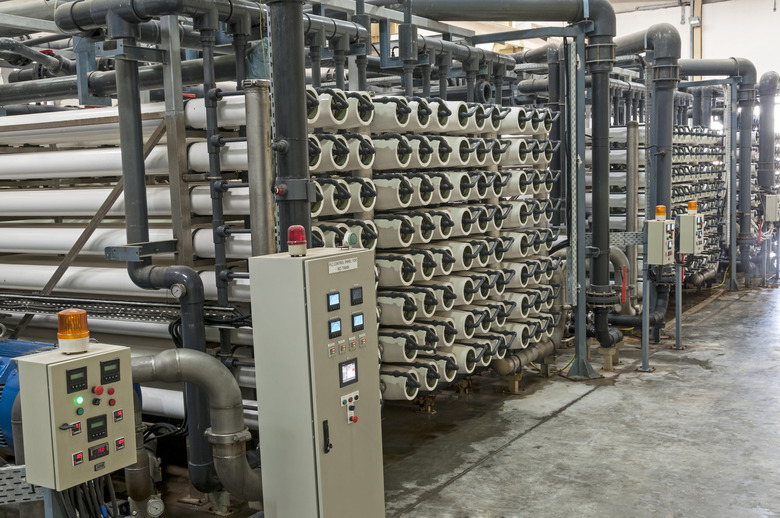The Disadvantages Of Desalination
Desalination is a process by which salt and brackish water is pulled out of the ocean and run through a desalination and purification system to result in clean, drinkable water. Desalination technology is hailed as a positive answer to worldwide water shortages, and is being developed and encouraged in areas that are close to oceans but lacking in freshwater supplies. However, desalination is not a fail-safe process and carries with it many environmental repercussions. The disadvantages of desalination are causing many people to think twice before starting desalination projects.
Waste Disposal
Waste Disposal
As with any process, desalination has by-products that must be taken care of. The process of desalination requires pre-treatment and cleaning chemicals, which are added to water before desalination to make the treatment more efficient and successful. These chemicals include chlorine, hydrochloric acid and hydrogen peroxide, and they can be used for only a limited amount of time. Once they've lost their ability to clean the water, these chemicals are dumped, which becomes a major environmental concern. These chemicals often find their way back into the ocean, where they poison plant and animal life.
Brine Production
Brine Production
Brine is the side product of desalination. While the purified water goes on to be processed and put into human use, the water that is left over, which has a super saturation of salt, must be disposed of. Most desalination plants pump this brine back into the ocean, which presents another environmental drawback. Ocean species are not equipped to adjust to the immediate change in salinity caused by the release of brine into the area. The super-saturated salt water also decreases oxygen levels in the water, causing animals and plants to suffocate.
Ocean Populations
Ocean Populations
The organisms most commonly affected by brine and chemical discharge from desalination plants are plankton and phytoplankton, which form the base of all marine life by forming the base of the food chain. Desalination plants therefore have the ability to negatively affect the population of animals in the ocean. These effects are further developed through the disadvantages caused by desalination "impingement" and "entrainment." While sucking ocean water in for desalination, the plants trap and kill animals, plants and eggs, many of which belong to endangered species.
Health Concerns
Health Concerns
Desalination is not a perfected technology, and desalinated water can be harmful to human health as well. By-products of the chemicals used in desalination can get through into the "pure" water and endanger the people who drink it. Desalinated water can also be acidic to both pipes and digestive systems.
Energy Use
Energy Use
In an age where energy is becoming increasingly precious, desalination plants have the disadvantage of requiring large amounts of power. Other water treatment technologies are more energy efficient.
Cite This Article
MLA
Terry, Carrie. "The Disadvantages Of Desalination" sciencing.com, https://www.sciencing.com/disadvantages-desalination-5961767/. 19 April 2018.
APA
Terry, Carrie. (2018, April 19). The Disadvantages Of Desalination. sciencing.com. Retrieved from https://www.sciencing.com/disadvantages-desalination-5961767/
Chicago
Terry, Carrie. The Disadvantages Of Desalination last modified March 24, 2022. https://www.sciencing.com/disadvantages-desalination-5961767/
